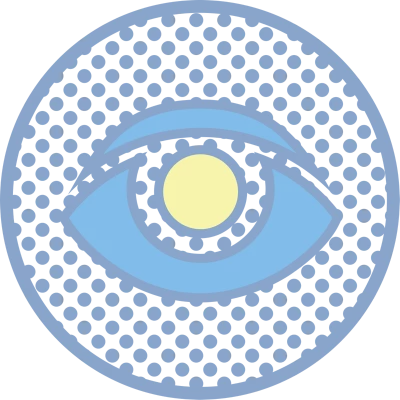What is Rosette Cataract?
Rosette cataract is a type of traumatic cataract. Traumatic cataract is the clouding of the lens that occurs either by blunt trauma to the head or eye region or penetrating ocular trauma resulting in the disruption of the lens fibers. This in turn prevents a clear image from forming on the retina. As mentioned, a rosette cataract can be formed by the sudden impact of blunt force. This holds true specially if the impacted area is or around the eye-ball. 60% of traumatic cataracts happen after the onset of minor concussion. The rosette cataract may be stable or progressive and can occur due to various shearing forces that introduce pathologic changes to the lenticular composition.
Rosette Cataract Symptoms
The major symptom related to rosette shaped cataract is the clouding of the lens which could extend to the entirety of the lens.

Causes of Rosette Cataract
Some of the causes for rosette cataract are:
-
Blunt force trauma to the head
-
Ocular trauma to the eyeball
-
Exposure to radiation
-
Electrocution
-
Chemical burns
Rosette Cataract Types
Rosette cataract is one of the most common traumatic cataracts involving blunt force trauma following both concussion and perforating injuries. It can occur either in the presence or the absence of a capsular tear.
Early rosette cataract – The formation of early rosette cataract occurs in the anterior capsule and sometimes in posterior capsules or both simultaneously. It generally appears as feathering lines of opacities along the star shaped suture line.
Late rosette cataract – The formation of late rosette cataract generally occurs a few years after an injury. It is usually found deep lying in the cortex and nucleus and develops in the posterior cortex. This type of cataract has sutural extensions that are shorter and more compact as compared to early rosette.
Rosette Cataract Treatment
The rosette cataract treatment can be done through surgery. The surgical treatment is generally selected depending on the morphology and the condition of the tissues other than only the lens.
When the cataract is membranous, membranectomy and anterior vitrectomy is done via either the anterior or the pars plana route. In cases where the lens has a white soft type rosette cataract, unimanual or bimanual aspiration is carried out. The process of phacoemulsification is carried out in the case of hard, large nuclei.
When phacoemulsification is carried out, the cataract is broken into small particles and taken out by the surgeon. An intraocular lens is implanted. This is done even when the anterior lens capsule has been ruptured. Intraocular implantation is generally preferred in the case of corneal injury. The whole surgery can be done in less than an hour.
If you or someone close to you has developed Rosette Cataract, do not put off an eye test. Walk into Dr. Agarwals Eye Hospital for an appointment with top specialists and surgeons in the field of eye care. Book an appointment now for Rosette Cataract Treatment and other Eye Treatment.
Frequently Asked Questions (FAQs) about Rosette Cataract
What defines a rosette cataract?
A rosette cataract is a specific type of cataract characterized by the formation of star-shaped or rosette-like opacities in the lens of the eye. These opacities can obstruct vision and cause visual disturbances.
What are the common visual symptoms associated with rosette cataracts?
Common visual symptoms associated with rosette cataracts include blurred vision, glare, difficulty seeing in low light conditions, and decreased visual acuity. These symptoms can progressively worsen as the cataract develops.
How does a rosette cataract develop within the eye?
Rosette cataracts typically develop due to the clumping or aggregation of lens fibers within the eye’s lens. This aggregation causes areas of opacity to form, resembling rosettes or star shapes. The exact cause of rosette cataracts may vary but can be influenced by factors such as age, genetics, and environmental factors.
Are there specific risk factors linked to the occurrence of rosette cataracts?
Specific risk factors linked to the occurrence of rosette cataracts may include advancing age, a family history of cataracts, certain medical conditions such as diabetes or metabolic disorders, prolonged exposure to sunlight or UV radiation, smoking, and certain medications such as corticosteroids.
What treatment options are available for rosette cataracts at Dr Agarwals Eye Hospital?
Treatment options for rosette cataracts at Dr Agarwals Eye Hospital may include surgical intervention, such as phacoemulsification with intraocular lens implantation. During this procedure, the cloudy lens affected by the cataract is removed and replaced with an artificial intraocular lens (IOL) to restore clear vision. The specific treatment approach will depend on the individual patient’s eye health, the severity of the cataract, and other factors assessed during a comprehensive eye examination by an ophthalmologist at the hospital. It’s important to consult with an eye care professional for personalised treatment recommendations.
This information is for general awareness only and cannot be construed as medical advice. Recovery Timelines, specialist availability, and treatment prices may vary. Please consult our specialists or visit your nearest branch for more details.Insurance coverage and associated costs may vary depending on the treatment and the specific inclusions under your policy. Please visit the insurance desk at your nearest branch for detailed information.

Do not ignore eye trouble!
Now you can reach our senior doctors by booking an online video consultation or a hospital appointment
Book an appointment now